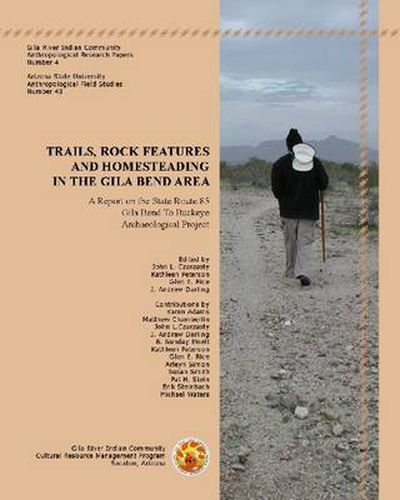Readings Newsletter
Become a Readings Member to make your shopping experience even easier.
Sign in or sign up for free!
You’re not far away from qualifying for FREE standard shipping within Australia
You’ve qualified for FREE standard shipping within Australia
The cart is loading…






Based on archaeological investigations along State Route 85, this fourth installment in the Gila River Indian Community Anthropological Research Papers provides a close look at the subtle interface between the archaeological cultures of the western Hohokam and eastern Patayan, including chapters on geomorphology, ceramics, lithics, shell, pollen, and ethnobotanical remains. An abundance of well-preserved trails and historical roads, including the Anza and Butterfield Trails, also provides the foundation for historical overviews and incisive theoretical discussion. This unique collaboration between ASU’s Office of Cultural Resource Management and the Gila River Indian Community’s Cultural Resource Management Program also provides an unusual account of Depression-era African American homesteading at the Warner Goode Ranch based on oral history, archival research, and archaeological data. Historic transportation corridors, homesteads, and prehistoric occupations on trails traversing cultural and geographic transitions make this a coherent and engaging view of this centuries-old crossroads and a valuable reference for the archaeology and history of the Gila Bend.
$9.00 standard shipping within Australia
FREE standard shipping within Australia for orders over $100.00
Express & International shipping calculated at checkout
Based on archaeological investigations along State Route 85, this fourth installment in the Gila River Indian Community Anthropological Research Papers provides a close look at the subtle interface between the archaeological cultures of the western Hohokam and eastern Patayan, including chapters on geomorphology, ceramics, lithics, shell, pollen, and ethnobotanical remains. An abundance of well-preserved trails and historical roads, including the Anza and Butterfield Trails, also provides the foundation for historical overviews and incisive theoretical discussion. This unique collaboration between ASU’s Office of Cultural Resource Management and the Gila River Indian Community’s Cultural Resource Management Program also provides an unusual account of Depression-era African American homesteading at the Warner Goode Ranch based on oral history, archival research, and archaeological data. Historic transportation corridors, homesteads, and prehistoric occupations on trails traversing cultural and geographic transitions make this a coherent and engaging view of this centuries-old crossroads and a valuable reference for the archaeology and history of the Gila Bend.